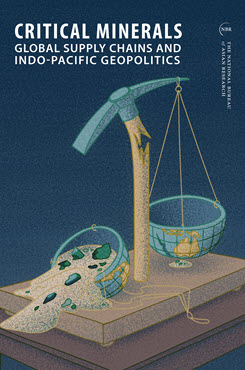Essay in NBR Special Report 102
Shiny Objects
Repositioning the United States for Critical Mineral Success
This essay examines the path that led to the current bottlenecks in supply chains for critical minerals, what the U.S. government has done to chart a new way forward, and possible next steps.
EXECUTIVE SUMMARY
MAIN ARGUMENT
One of the building blocks of the modern global economy is a class of minerals for which there was not much demand just a few decades ago. These minerals are essential for meeting the challenge of climate change through a transition to cleaner energy, which is driving demand even higher. The U.S. does not now have a sufficient and sustainable supply of these critical minerals, which is an increasingly significant environmental, economic, and geopolitical vulnerability. Although the Biden administration is harnessing a bipartisan consensus to take steps to improve the U.S. position on critical minerals, these efforts will not be enough without a more strategic approach. The future of U.S. economic and geostrategic competitiveness, especially with China, hangs in the balance.
POLICY IMPLICATIONS
The U.S. needs a comprehensive critical mineral strategy that ties together all the various existing and emerging policy and statutory initiatives and aspirations in a purposeful, coherent, and mutually reinforcing approach. Key elements of that strategy should include the following:
- domestic investments and international cooperation and investment
- analysis of the demand growth for critical minerals
- comprehensive environmental, social, and governance standards, not only for U.S. companies but also for allies and partners as part of a shared commitment and comparative advantage
- innovation in mining, processing, recycling, and end use of critical minerals
- modernization of U.S. policy, legal, and institutional infrastructure for critical minerals
Sharon E. Burke is the Founder and President of Ecospherics.



